Samsung Galaxy S23 Ultra vs Apple iPhone 14 Pro Max
We may earn a commission if you make a purchase from the links on this page.
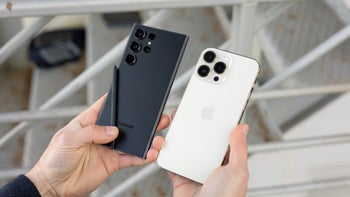
There is no rivalry in the US phone world more visible than that between the flagship phones of the Apple-Samsung duopoly as these two brands hold the lion's share of handsets sold by US carriers and are the ones whose high-end phones are looked forward to the most. This is why we pit the pinnacle of Samsung's Galaxy S23 line - the S23 Ultra - against Apple's finest until the fall season, the iPhone 14 Pro Max.
Samsung's 2023 flagship trio comes powered by a custom Snapdragon 8 Gen 2 processor that can give the Apple A16 a run for its money, especially in its heretofore bastion of performance advantage, the graphics subsystem as Samsung's phone can stay cooler while gaming, yet with very comparable frames per watt performance.
The flagship Galaxy S23 Ultra has a boxy stylus-wielding design and a new 200MP camera, while the iPhone 14 Pro Max that is proving to be the most popular handset of Apple's latest crop since Apple threw the kitchen sink of specs it is capable of at it, widening the gap with the smaller Pro and non-Pro iPhones to record length.
As you will see from our Galaxy S23 Ultra vs iPhone 14 Pro Max comparison below, it leans heavily in favor of Samsung's finest, at least when it comes to hardware bang for the buck when all the S23 series deals are stacked up.
Main Samsung Galaxy S23 Ultra vs Apple iPhone 14 Pro Max differences:
- 200MP vs 48MP main camera sensors
- 10x vs 3x optical zoom
- 8K@30FPS video
- S Pen stylus support
- 45W vs 27W charging speeds
Jump to section:
Design and display
There are changes in the S23 series design, with the Ultra taking a boxier shape, while the regular S23 and the Plus sibling drop the camera island plateau on the back, and adopt the individual protruding lenses from the Ultra. The iPhone 14 Pro Max body stayed the same with only a few new colors thrown in for a good measure. It’s an edgy, heavy phone to deal with, especially with one hand, while the Ultra’s curved screen will probably bring it an ergonomics advantage.
At the rear, we still have three lens rings protruding from the back independently, rather than being a part of an elevated camera island "plateau" as on most every other major phone out there, including the iPhone 14 Pro Max.
]
S23 Ultra vs iPhone 14 Pro Max display
Apple equipped the iPhone 14 Pro Max with a bright OLED panel of the latest generation that is the technology employed on the Galaxy S23 Ultra, too. The Ultra sports a 6.8" 1440p panel of Samsung's 12th-gen OLED display generation, like the one that boosted the peak brightness of the Galaxy Z Fold 4 significantly compared to the Z Fold 3, or brought the record peak brightness of 2000 nits on the iPhone 14 Pro Max.
The S22 Ultra already sports top brightness levels in the isolated scenarios that Samsung tests at, so the S23 Ultra panel is a sight to behold as it one-ups its predecessor in that respect in our benchmark display tests.
Even if it doesn’t hit 2000 peak nits like the 14 Pro Max in isolated scenarios, Samsung has proven it can make well-calibrated panels with excellent color presentation, just as Apple, as you can see from our CalMAN charts done with the X-Rite color calibration checker tool.
On the other hand, Apple melted the dynamic refresh rate advantage that the Galaxies had by introducing 1Hz-120Hz range for its iPhone 14 Pro models which previously only dipped to 10Hz, so we can call it a draw in the display quality department.
As usual, Corning announced that its newest generation of reinforced glass - the Gorilla Glass Victus 2 - to be the tough display cover and body glass that the S22 Ultra uses. Whether or not it is tougher than Apple's proprietary Ceramic Shield remains to be tested.
Samsung Galaxy S23 Ultra vs iPhone 14 Pro Max price
| Model | Price |
|---|---|
| Galaxy S23 Ultra | $1199 (256GB), $1379 (512GB), $1619 (1TB) |
| iPhone 14 Pro Max | $1099 (128GB), $1199 (256GB), $1399 (512GB), $1599 (1TB) |
While the starting price of the iPhone 14 Pro Max is $100 cheaper than that of the Galaxy S23 Ultra, that's because it's te 128GB model. Once you get into the 512GB and 1TB tiers, the prices equalize as Apple charges an arm and a leg for extra storage, while Samsung produces its own, and starts off with 256GB storage.
Galaxy S23 Ultra vs iPhone 14 Pro Max specs
The Galaxy S23 Ultra hardware surpasses every imaginable iPhone 14 Pro Max specification, save for the display characteristics and processing power.
| Galaxy S23 Ultra (exp.) | iPhone 14 Pro Max | |
|---|---|---|
| Display | 6.8-inch, 3080 x 1440 pixels, 500ppi, 1-120Hz Dynamic AMOLED, Gorilla Glass Victus 2 | 6.7" OLED 1-120Hz ProMotion, 2000 nits brightness |
| Dimensions | 163.4×78.1×8.9 mm | 160.8 x 78.1 x 7.65 mm |
| Main camera | 200MP Samsung ISOCELL 1/1.3" sensor with 0.60 micron pixel size, OIS, Dual PDAF | 48MP Main (1X), 24mm f/1.78 |
| Telephoto camera | 10MP, 3.0X optical zoom, F2.4 aperture, 69mm, 1/3.52" sensor size, Pixel size: 1.12 μm | 12MP 3.0x; Aperture size: F2.8; Focal Length: 77 mm |
| Telephoto camera #2 | 10MP, 10.0X optical zoom, F4.9 aperture, 230mm, 1/3.52" sensor size, Pixel size: 1.12 μm | n/a |
| Ultra-wide camera | 12MP, F2.2 aperture, 13mm, 1/2.55" sensor size, Pixel size: 1.4 μm | 12MP, F2.2; Focal Length: 13 mm; Pixel size: 1.4 μm |
| Hardware | 3.36 GHz Snapdragon 8 Gen 2 Mobile Platform for Galaxy 8GB RAM + 256GB, 12GB RAM + 512GB, 12GB RAM + 1TB | A16 Bionic, 4nm, 6GB LPDDR5, 128GB-1TB |
| Battery | 5,000mAh, 45W wired, 15W wireless charging | 4,323 mAh, 27W wired, 15W wireless charging |
Camera
One area where the Galaxy S23 Ultra will again be leaps and bounds ahead of its main competitor in Apple’s roster is the camera hardware. The biggest upgrade that arrives with the Galaxy S23 Ultra is the new custom 200MP ISOCELL HP2 main camera sensor with 0.6 micron pixels that Samsung prepared exclusively for its 2023 flagship.
While Apple finally ditched its 12MP cameras and equipped the iPhone 14 Pro Max with a 48MP sensor, it’s no match for the kind of detail and resolution that the S23 Ultra will be able to produce.
In a low-light environment, the pixel size goes to 1.12 microns allowing the user to take 50MP photos with increased light sensitivity, while at night the S23 Ultra introduces an even larger, 2.4 micron binned virtual pixel by combining 16 pixels into one so that a picture can be snapped at 12.5MP. This system will allow users to take sharp photos no matter how much light is available.
Galaxy S23 Ultra vs iPhone 14 Pro Max camera samples
Our low-light camera samples from the S23 Ultra seem to confirm its superior light-catching abilities. Zoom photos and night time ones are where the iPhone should be easily beat by the S23 Ultra, so have a look how they stack up compared to the iPhone 14 Pro Max camera set.
Main Camera - Good Light
The main camera of the Galaxy S23 Ultra captures more of the fine details in a scene than the iPhone 14 Pro Max. The samples also exhibit colder colors and toned down contrast that stay truer to what's in front of the lens than the jollier but overly warm and yellow overcast of Apple's iPhones. The iPhone 14 Pro Max's camera algorithms almost always decide to shoot one exposure step above what Samsung deems appropriate for the scene, making the S23 Ultra photos look a tad darker in the process but with less of a highlight burn around brighter objects in the scene.
The Galaxy S23 Ultra also softens the background around the main object in the frame a bit more without resorting to a portrait mode switch, while photos from the iPhone 14 Pro Max look sharper and flatter. Zoom into the iPhone samples, however, and detail and sharpness immediately get lost compared to the S23 Ultra photos, indicating that the 200MP sensor offers much more photographic data to play with and enhance if needed.
When the lights start to dim down, the advantage of the huge virtual pixels on the Galaxy S23 Ultra and their quad autofocus technology become glaringly obvious. Indoor low-light and night scenes from Samsung's phone come out with better dynamic range, illuminating both the dark coat of our subject in the sample here, and the lamp on the wall more evenly than what the iPhone 14 Pro Max is able to muster.
Main Camera - Indoor low light
When the lights start to dim down, the advantage of the huge virtual pixels on the Galaxy S23 Ultra and their quad autofocus technology become glaringly obvious. Indoor low-light and night scenes from Samsung's phone come out with better dynamic range, illuminating both the dark coat of our subject in the sample here, and the lamp on the wall more evenly than what the iPhone 14 Pro Max is able to muster.
The iPhone simply went for its usual step higher exposure here, plunging the shadows in darkness and creating a halo in the place of the lamp's light source compared to the wider dynamic range that the S23 Ultra was able to capture.
Ultra-wide
In the samples with the ultrawide cameras, Apple has again boosted the contrast and color temperature over what Samsung's algorithms chose on the Galaxy S23 Ultra, creating a more visually striking scene than it needs to be compared to reality. Samsung's phone managed to create a more airy and less dramatic ambiance while maintaining good dynamic range with more evened-out illumination, and colors that still pop.
In lower light scenarios, however, the higher exposure that the iPhone 14 Pro Max goes with makes more objects of the ultrawide scene visible, while the boosted contrast and warmer colors create a crowd-pleaser of a sample even when the S23 Ultra doesn't struggle to focus like on the first sample below.
The Ultra's sensor and image processor also support smoother 8K video at 30 frames per second, as well as seamless dual HDR shooting in 4K and FHD modes. The staggered HDR mode combines all three exposures to deliver great-looking HDR photos and videos, but the iPhone 14 Pro Max is unsurpassed when it comes to video capture, so we'd wager to guess that the S23 Ultra will only beat it in video definition.
Samsung also has an answer to Apple's Action Mode video recording with all-axis stabilization that is exclusive to the top end Galaxy S23 Ultra model as an extension to Samsung's resident Super Steady mode.

Performance and software
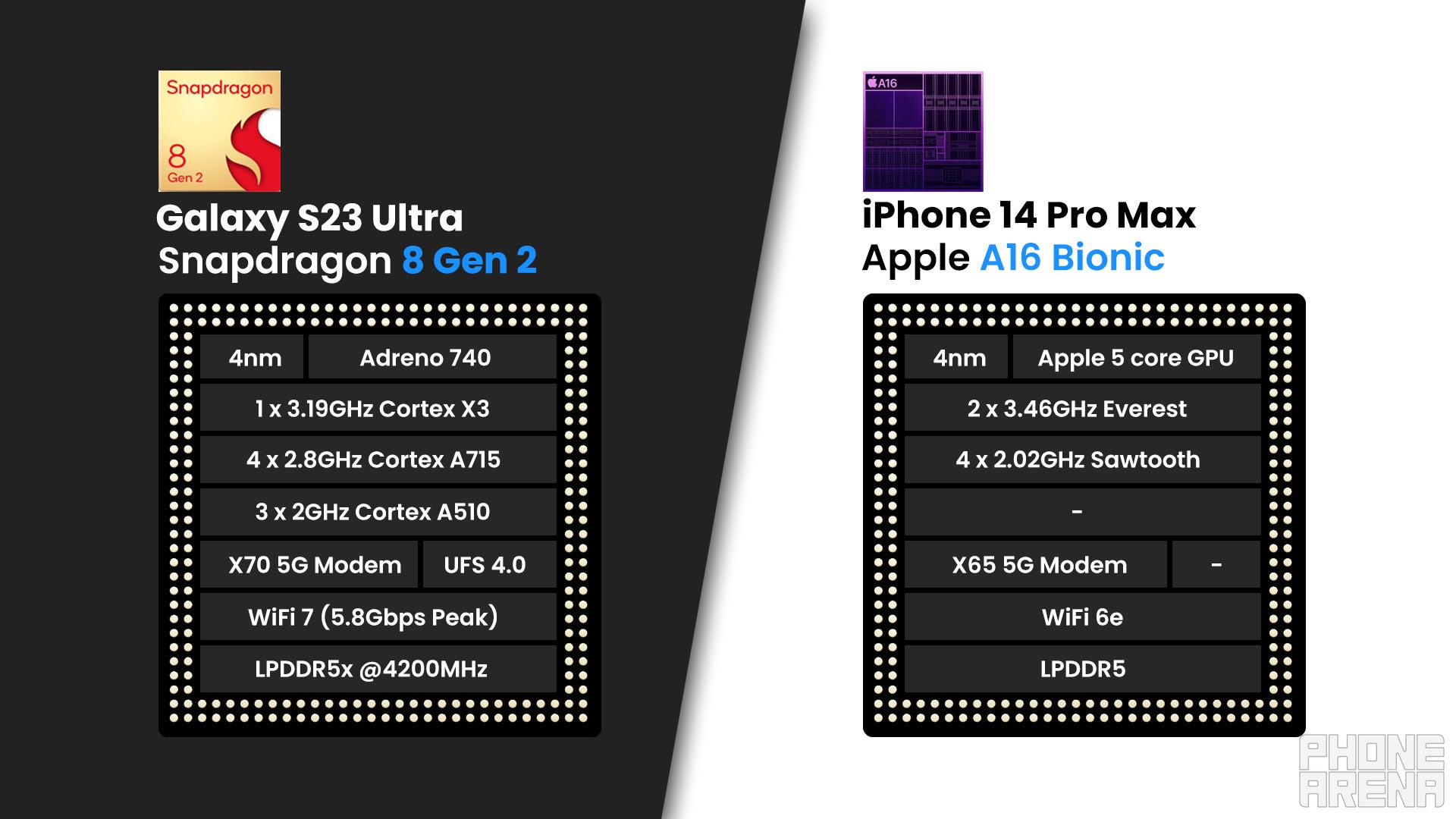
According to benchmarks, the Snapdragon 8 Gen 2 chip seems to be on par with the iPhone 14's Apple A15 processor, at least in the multi-core results, despite being clocked lower, and it only gives way to the new Apple A16 in the 14 Pro Max in the multi-core count, but not in gaming performance where it meets and even beats the A16 as it stays cooler under gaming pressure.
The Galaxy S23 Ultra, however, gets a custom Snapdragon 8 Gen 2 called Mobile Platform for Galaxy, which is clocked higher than the stock 3.2 GHz version that Qualcomm announced, at the long-rumored 3.36 GHz, giving Apple a run for its money. Also, the iPhone 14 Pro Max's 5G modem is a generation behind the Galaxy S23 Ultra connectivity, thanks to the new Qualcomm X70 5G modem supporting every commercial 5G band from 600 MHz to 41 GHz.
As for the software, the Galaxy S23 Ultra is running on Android 13 with Samsung's One UI 5 slapped on top, while the iPhone 14 Pro Max runs on iOS 16 and the two systems are very different from one another, so it's a matter of habit and personal preference.
Battery life and charging speeds
The iPhone 14 Pro Max has an excellent battery endurance, but the battery life of the Galaxy S23 series is also getting a 20% bump from the utilization of a new Snapdragon 8 Gen 2 processor made on a second-gen 4nm technology, as well as the newer LTPO OLED panel generation that it brings to the table.
While in our battery benchmark tests the iPhone 14 Pro Max managed to outrun the Galaxy S22 Ultra by a significant margin in certain scenarios, its successor the Galaxy S23 Ultra runs on par in the browsing test now with its 5000mAh battery, only giving way in the 3D gaming and video streaming endurance competition. We test the battery with unified runs at one and the same screen brightness to even the playing field.
Where the Galaxy S23 Ultra shines in comparison with the top iPhone, however, is charging speed. While not on the OnePlus 11 level of 23 minutes charging for a 5,000 mAh battery, Samsung's rapid charging speeds are pretty decent as it takes it about an hour (66 minutes) to fill up a 5,000 mAh battery pack with Samsung's 45W charger.
| Model | Galaxy S23 25W wired | Galaxy S23+ 25W wired | Galaxy S23+ 45W wired | S23 Ultra 25W wired | S23 Ultra 45W wired |
|---|---|---|---|---|---|
| in 15 mins | 28% | 27% | 43% | 27% | 41% |
| 30 mins | 58% | 55% | 74% | 51% | 68% |
| 45 mins | 79% | 80% | 92% | 71% | 89% |
| 1 hour | 95% | 95% | 100% | 91% | 98% |
| Full Charge takes (in hrs / mins) | 1 hour 8 mins | 1 hour 11 mins | 1 hour | 1 hour 19 mins | 1 hour 6 mins |
Compare that to the iPhone 14 Pro Max which takes almost two hours to top up a smaller unit at a maximum of 27W, and Samsung again comes out ahead of its Apple rival as far as charging times are concerned.
Summary
Even those heavily invested in the Apple ecosphere may be tempted to snatch the Galaxy S23 Ultra off the shelves. Samsung's 2023 flagship offers a more ergonomic design with integrated S Pen stylus, and its under-the-hood upgrades such as a new 4nm processor would match the iPhone spec for spec, even the Pro model with Apple A16 chip.
Samsung brought its A-game to counter the new iPhone 14 Pro Max camera and bright display and it was able to, as the Galaxy S23 Ultra sports the largest camera sensor on an S-line phone so far, and a more capable 5G modem by Qualcomm that the iPhone lacks.
Don't even get us started about the Galaxy S23 Ultra's advantage in the optical zoom department before the tired 3x telephoto of the iPhone 14 Pro Max that has been Apple's modus operandi for years on end now, or its much faster charging abilities with a battery life that is now on par.
Still, once you get in Apple's ecosystem grip, it's hard to break with the company and its product, so it remains to be seen if the slightly more expensive Galaxy S23 Ultra will manage to put a dent in the iPhone 14 Pro Max's market share.
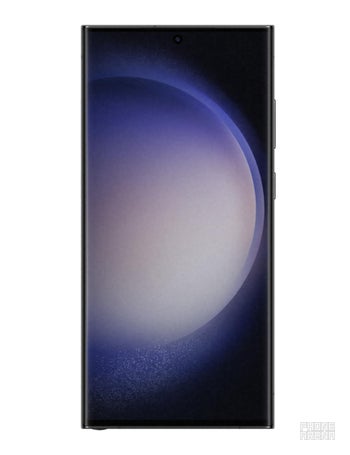
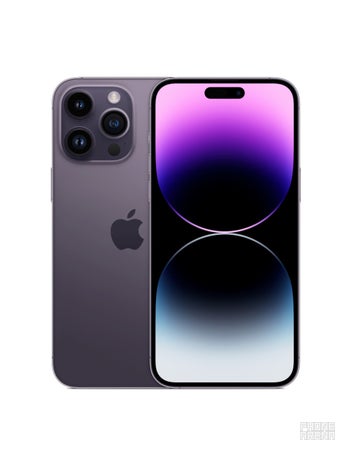
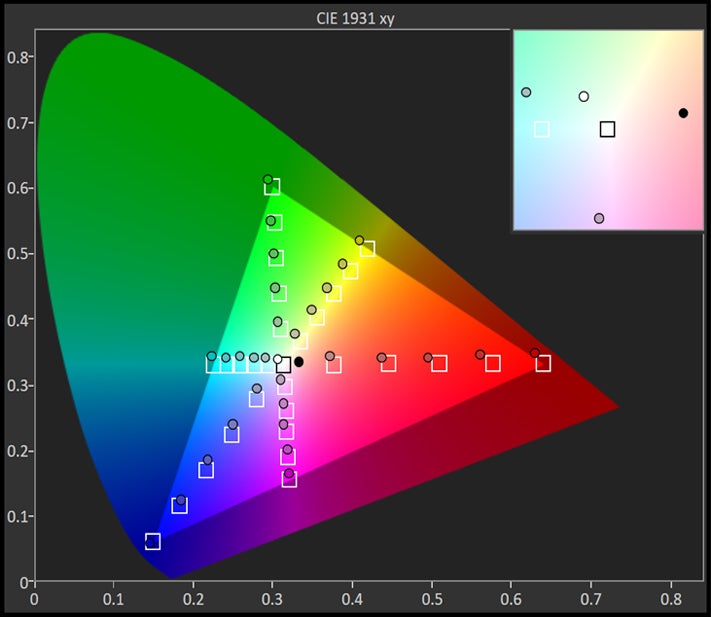



























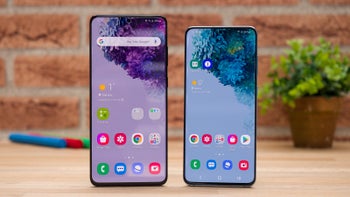












Things that are NOT allowed: